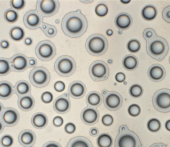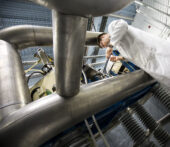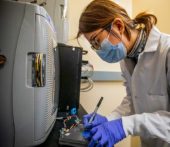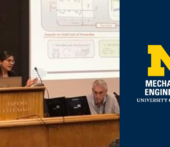
03/14/2024
It looks like the same mechanism that breaks up airplane contrails might be at play in forming the clumps of hydrogen gas that ring the remnant of supernova 1987A.

It looks like the same mechanism that breaks up airplane contrails might be at play in forming the clumps of hydrogen gas that ring the remnant of supernova 1987A.

The Energy Transport Laboratory has published a new study about droplet coalescence, an important process that affects droplet shedding on state-of-the-art oil-impregnated surfaces.

Funded with $1 million from the Department of Energy’s Nuclear Energy University Partnerships program, ME professor, Serife Tol, will be developing a quality assessment method for nuclear reactor parts using advanced ultrasonic imaging.

A gathering of a few of the many efforts mechanical engineers are putting towards a greener future. Happy Earth Day!

Researchers and staff from the University of Michigan, Eastern Michigan University, Duke University, and 374Water recently won a grant to turn Matthaei Botanical Gardens’ trash into treasure.

Andrew Gayle, PhD candidate in U-M Mechanical Engineering, received the AVS Thin Film James Harper Award at the American Vacuum Society’s (AVS) 68th International Symposium for his talk, “Tunable ALD Infiltration into High-Aspect-Ratio Aerogels Enabled by Process Modeling for Solar Thermal Applications.”

Alauddin Ahmed, Assistant Research Scientist in Mechanical Engineering, was awarded a Carbon Neutrality Acceleration Program grant by the Graham Sustainability Institute at U-M for his project on pulling carbon dioxide from the atmosphere.

The UM Battery Lab, led by Mechanical Engineering Professor Jeff Sakamoto, is working to create safer electric vehicle batteries that last longer.

Two mechanical engineering professors to lead effort to boost understanding of solid-state EV power cells.

Dr. Stefanopoulou spoke about her “research vision on electrification of the automotive sector and the challenges that are involved in advancing battery technology.”